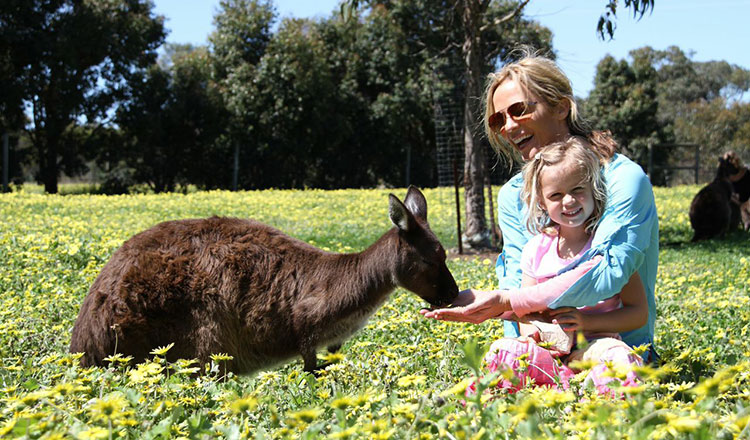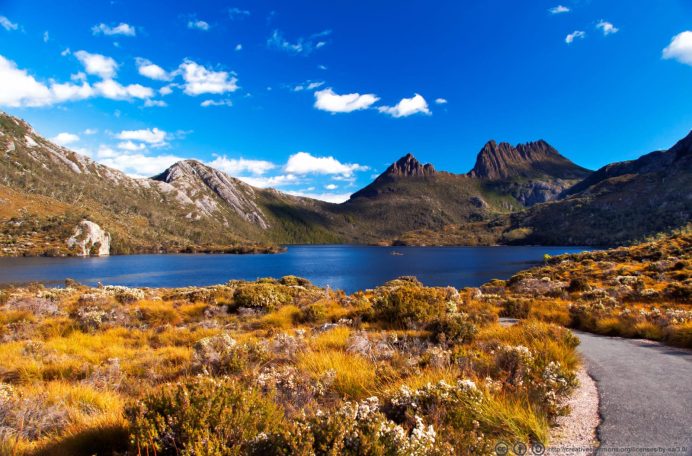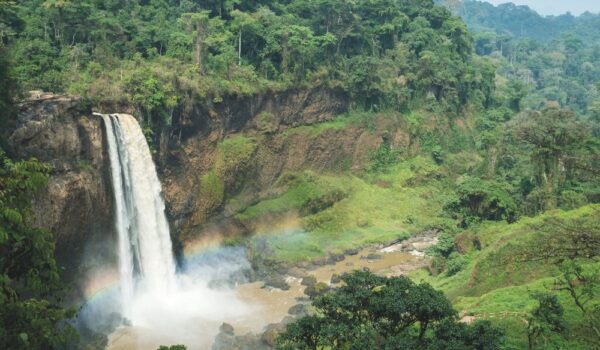Travel journalist Amanda Woodard takes us on a journey through the pristine countryside of Tasmania and introduces us to the wonderful people who live there.
For her last birthday present Lukie Smith’s husband Alan gave her not one, but two Highland cows. Many women might have been aghast at his choice but it was exactly what she wanted. After leaving Melbourne two years ago, the couple and their young daughter began a new life running a small tourist business in Promised Land, in the lake district of northern Tasmania.
I mention the mop-haired cattle because they were usually the first sight I saw in the mornings from one of the Smith’s holiday cabins. Members of a menagerie consisting of rescued donkeys, a retired racing horse, hens and wallabies, all set picturesquely against the magnificent basalt outcrop of Mount Roland, that rises from the Kentish plains like a Tasmanian Uluru.

These rich pasture lands are often overlooked in the rush to get to the world heritage listed Cradle Mountain Area that attracts thousands of tourists each year. But if you linger a while you will notice the sheer bounty of Tasmania parading before your eyes. Apple orchards overlook ponds crowded with ducks, sheep prized for the quality of their wool graze in fields of dewy English grass: it’s a nursery book landscape.
Yet Promised Land is only a two-hour drive from Launceston airport and a mere half hour from Cradle Valley, so a good alternative mountain base for those seeking peace and quiet away from the hiking hordes. A noisy day, says Lukie, is when a strong wind is blowing through the trees.
It was this tranquility that no doubt appealed to the Scottish pioneers who settled in the Kentish plains. Thrown off their lands by English Lords or the victims of religious persecution, any anxieties they had about crossing to the other side of the world were dispelled when they saw how perfect the land was for farming. Their evident happiness is summed up in village names: besides Promised Land, you’ll find Paradise and Nowhere Else.
It’s hard to believe now looking at the craggy blue profile, but it was nine years after the area was settled in 1841 that tree felling revealed Mount Roland to the pioneers.

Up close, it isn’t as formidable as it looks from afar. The ascent, which begins at Gowrie Park Village, took us – two reasonably fit adults and two teenagers forging ahead, around five hours. Although there were steep sections, most of the well maintained path rises gently across the plateau through lovely eucalyptus forest until the tree line falls away revealing spectacular views across to the Bass Strait or, in the other direction to Cradle Mountain. Be warned though, the mountain has a reputation as a snake magnet but we didn’t see any.
The rather eccentric town of Sheffield is the nearest place to put your feet up post-climb . In recent years, the town has made a name for itself as the home of an international mural festival which coincided during our stay. We watched art in action coming together on a grass court behind the information centre but you could also see it unfold in real-time live-streaming. Even if you’re not there for the festival, there are about 50 permanent murals in town, many depicting local historical events. There are also a number of good cafes and restaurants; we had excellent Caesar’s salads and burgers at the pretty Apple Tree Cafe close to a good vintage clothes shop where my daughter bought a pair of 1950s pants in orange gingham.
She didn’t look out of place at our next pitstop. Anyone with young children (and plenty of those indulging their inner child) make a beeline for the gaudy but fun Tasmania and the Village of Lower Crackpot. Built on the site of a working lavender farm which is in full bloom in January, there are eight themed mazes with plenty of humorous touches to amuse the kids, as well as a reproduction of Henry VIII’s maze at Hampton Court in London and a fragrant botanical maze. There is also a surprisingly good cafe specialising in waffles.

Inevitably, though the lure of Cradle Mountain becomes irresistible. With visitor numbers increasing each year – from 200,000 in 2014 to 280,000 in 2018, even local tourism operators are worried that it is being “loved to death”. But the park manages guests well. Cars are left parked and buses ferry visitors to trail drop off points. We headed for one of the most popular – the easy, two-hour circuit around the glacial Dove Lake. Once on the boardwalk, the crowds thin out and there are plenty of beautiful look-outs from Glacier Rock to the old Boatshed. And if you’re going to stop for a picnic, make for the head of the lake underneath the towering peak of Cradle Mountain itself with the azure blue waters of the lake at your feet. The only problem then, is you may never want to stir.
The Carousel would like to thank Amanda Woodard for her article.






